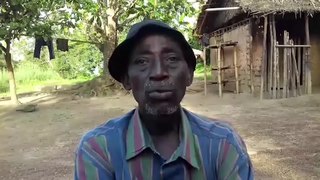Related Research Articles

The Kru languages are spoken by the Kru people from the southeast of Liberia to the west of Ivory Coast.
The Krahn are an ethnic group of Liberia and Ivory Coast. This group belongs to the Kru language family and its people are sometimes referred to as the Wee, Guéré, Sapo, or Wobe. It is likely that Western contact with the Kru language is the primary reason for the development of these different names.
Northeast Malakula, or Uripiv-Wala-Rano-Atchin, is a dialect chain spoken on the islands of Uripiv, Wala, Rano, and Atchin and on the mainland opposite to these islands. Uripiv-Wala-Rano-Atchin is spoken today by about 9,000 people. Literacy rate of its speakers in their own language is 10–30%.
The Saho language is an Afro-Asiatic language spoken in Eritrea, Sudan and Ethiopia. It belongs to the family's Cushitic branch.
Massa is a Chadic language spoken in southern Chad and northern Cameroon by the Masa people. It has approximately 200,000 speakers.
Guéré (Gere), also called Wè (Wee), is a Kru language spoken by over 300,000 people in the Dix-Huit Montagnes and Moyen-Cavally regions of Ivory Coast.
Gwere, or Lugwere, is the language spoken by the Gwere people (Bagwere), a Bantu people found in the eastern part of Uganda. It has a close dialectical resemblance to Soga and Ganda, which neighbour the Gwere.
The Sapo language, also known as Sarpo or Southern Krahn, is a Kru language of the Niger–Congo language family. It is spoken in eastern Liberia, primarily in Grand Gedeh County and Sinoe County, by the Sapo people. Its dialects include: Juarzon, Kabade (Karbardae), Nomopo (Nimpo), Putu, Sinkon (Senkon), and Waya (Wedjah).
The Gbi and Dorue language, also known as Gbee or Gbi and Dorue, is similar to the Krahn language of the Niger–Congo language family. It is spoken in northern Liberia which is a district within Nimba County. Its dialects include Gbi and Dorue. It has a lexical similarity of 78% with the Bassa language.

Singpho is a dialect of the Jingpho language spoken by the Singpho people of Arunachal Pradesh and Assam, India. It is spoken by at least 3,000 people. "Singpho" is the local pronunciation of "Jingpho," and the dialect shares 50% lexical similarity with Jingpho.
Lawangan is an Austronesian language of the East Barito group. It is spoken by about 100,000 Lawangan people living in the central Kalimantan, Indonesia. Lawangan has a high degree of dialectal diversity.
The Basa language, disambiguated as Basa-Benue, and also called Abacha, Abatsa, ru-Basa, Rubassa, is a Kainji language spoken in central Nigeria, in the vicinity of Bassa, Ankpa, Nasarawa, Gurara, Kwali and Makurdi. Blench (2008) notes that Basa-Makurdi, Basa-Gurara and Basa-Kwali are separate varieties from Basa-Kwomu or Basa-Komo of Bassa, Ankpa and Nasarawa Local Government Areas and other Bassa speakers are Bassa Nge (also known as Bassa Nupe.

Konobo, or Eastern Krahn, is a Kru language of Liberia.
Daho and Doo are two mutually intelligible Guere dialects which are divergent from other varieties spoken by the Guere people.
Glaro and Twabo are two largely mutually intelligible dialects of the Wèè languages which are divergent other. Ethnologue reports that Twabo has slight intelligibility with some dialects of Eastern Krahn.
Musey is a Chadic language of Chad and Cameroon. There is a degree of mutual intelligibility with Masana. Although Musey and Masa are mutually unintelligible, many Musey speakers also speak Masa.
Davaoeño (Dabawenyo) is a language of the Davao Region of Mindanao in the Philippines. According to Zorc (1977), it is a native Mansakan language influenced by Cebuano and Tagalog. Traditionally, it was the principal language of the Davaoeño people, but it is no longer spoken in Davao City as speakers have shifted to a local dialect of the Cebuano language, called Davaoeño Cebuano.
Gubbi Gubbi, also spelt Kabi Kabi, is a language of Queensland in Australia, formerly spoken by the Kabi Kabi people of South-east Queensland. The main dialect, Gubbi Gubbi, is extinct, but there are still 24 people with knowledge of the Butchulla dialect, a language spoken by the Butchulla people of K'gari.

Idalaka is a Malayo-Polynesian dialect chain spoken in East Timor. The name is a portmanteau of Idaté and Lakalai.
Gumawana is an Austronesian language spoken by people living on the Amphlett Islands of the Milne Bay Province of Papua New Guinea.
References
- ↑ Krahn at Ethnologue (18th ed., 2015) (subscription required)